Insect pests of linseed and their seasonal incidence
Insect pests of linseed and their seasonal incidence
Introduction
Linseed (Linum usitatissimum L.) is a significant ancient oilseed crop cultivated throughout America, Europe, and Asia for either seed oil or fibre or for both purposes (dual purpose flax). It is grown primarily in south western Asia for its oil, including Turkistan, Afghanistan, and India.
Every part of the linseed plant is utilized commercially, either directly or after processing. The stem yields good quality fibres having high strength and durability. Flax has been used principally for the fabrication of cloths (linen) and papers, while flaxseed oil and its sub-products are used in animal feed formulation. Its added value has paved the way for its diverse nutraceutical and medicinal uses (Nair et al., 2021). Linseed is an extremely nutritious source of high-order linolenic acid (source of fatty acids Omega-3 and Omega-6), complete protein (all 8 vital amino acids), minerals, vitamins, and complex carbohydrates (Sahoo, 2016). Recent research has shown that it is the finest herbal source of fatty acids Omega-3 and Omega-6 that enhances the human nervous system. Its fibre is lustrous, which combines durability with strength and blends well with different natural and manmade fibres.
India ranks third in the area after Canada and Kazakhstan, nearly equal to but fourth in production after Canada, China, and Kazakhstan. Our domestic production of 1.21 lakh tons is made from a region of 2.0 lakh ha in the world arena with a low productivity of 605 kg/ha (FAO, 2020). Among the multiple variables responsible for low seed yield, insect pests, are extremely damaging, causing severe harm and are accountable for reducing linseed crop yield (Malik, 2006).
Therefore, the present investigation was carried out to assess the seasonal incidence helps to take up effective management against insect pests of linseed for the benefit of farmer and consumer communities.
Sampling and observation of insect pests
The present study was carried out during 2020-2021 in the research farm of ICAR-Indian Institute of Oilseeds Research, Rajendranagar, Hyderabad, Telangana, India at an altitude of 540 m, 17º19'17" N latitude and 78º24'51" E longitude and has a tropical agroclimate. For the seasons 2020–2021, field experiments were conducted in flaxseed (var. Neelam). The net plot size was 4 m × 5 m with spacing of 10 cm × 30 cm plant to plant and row to row. All the recommended agricultural practices were followed in raising the crop. No plant protection measure was taken throughout the crop season. Observations on the incidence of insect pests were recorded at weekly interval starting from initial appearance to final disappearance or up to harvest. Observations on the incidence of insect pests were recorded at fortnightly from 10 randomly selected plants by counting number of immature and adults of per plant.
Insect pests of linseed and their seasonal incidence
Twelve insect pests such as leaf miner, leafhopper, mirid bug, stink bug, flea beetle, bud fly, pumpkin beetle, Helicoverpa, Spodoptera, looper, and tussock caterpillar that caused damage in flaxseed under Hyderabad conditions were recorded during 2020-2021. Among them, leaf miner, whiteflies, leafhopper, Spodoptera and Helicoverpa were the major insect pests of flaxseed.
Seasonal incidence of twelve insect pests of flaxseed were determined under Hyderabad conditions during 2020-2021. Population (per 10 plants) of leaf miner varied from 0 to 2.8. Population (per 10 plants) and whiteflies, leafhopper, stink bug and mirid bug reached maximum during first week of January 2021 (22.2), last week of January 2021 (13.6), first week of January 2021 (2.6) and last week of February 2021 (2.2), respectively. Spodoptera population reached maximum during third week of January 2021 (2 per 10 plants). Population (per 10 plants) of Helicoverpa ranged from 0 to 2.6 and reached highest during third week of January 2021 (2.6). Bud fly population (per 10 plants) varied between 0 and 2.2. Other insect pests such as pumpkin beetle, flea beetle, looper and tussock caterpillar also caused damage to flaxseed and their incidence was very negligible.
Insect pests of linseed and their damage symptoms
Leaf miner
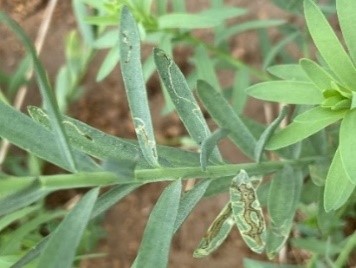
Leafhopper
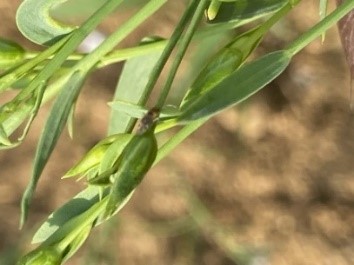
Mirid bug
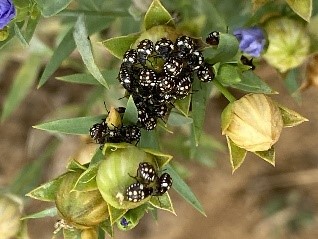
Stink bug
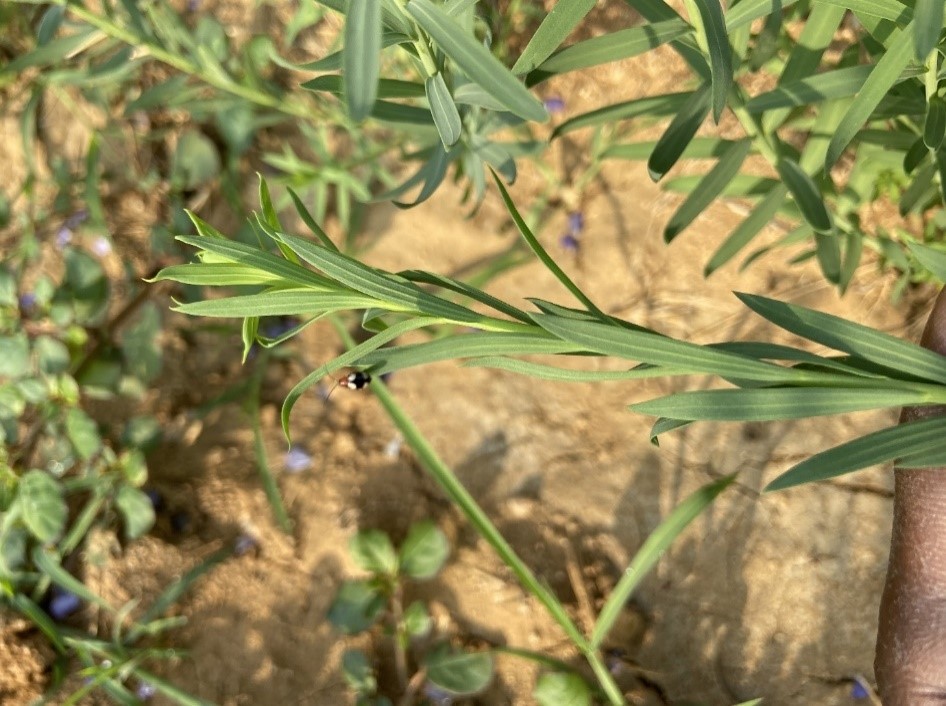
Flea beetle
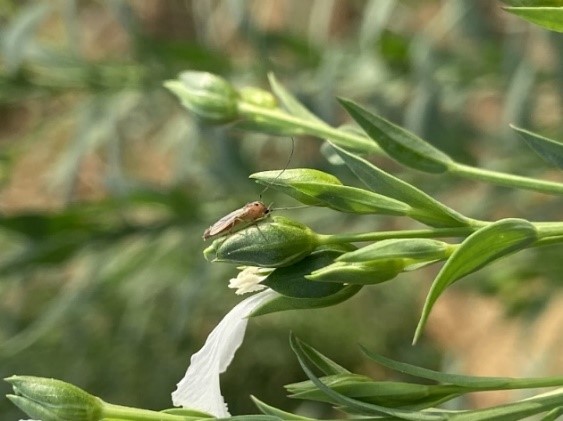
Bud fly
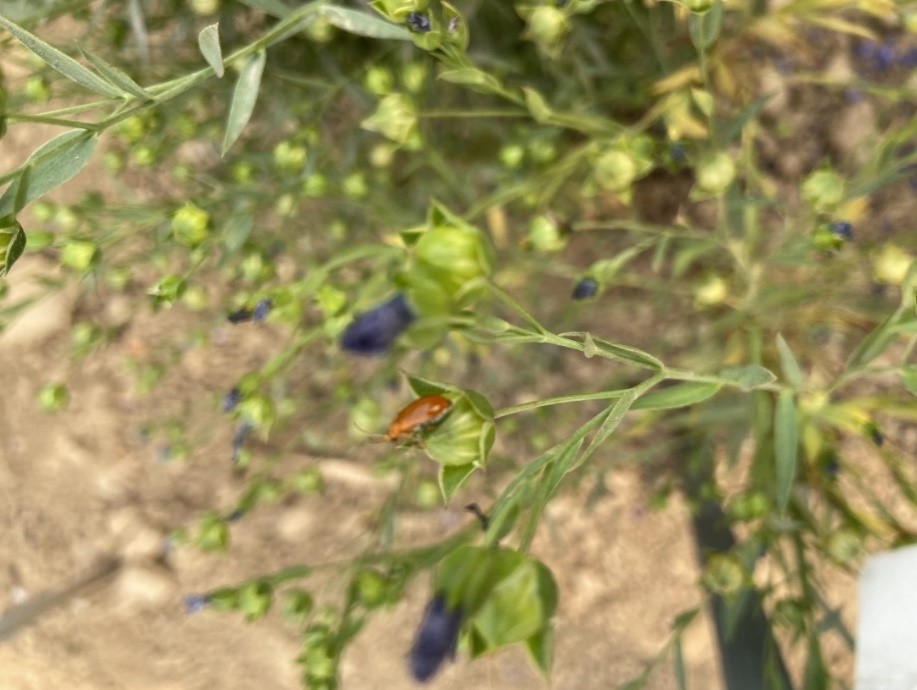
Pumpkin beetle
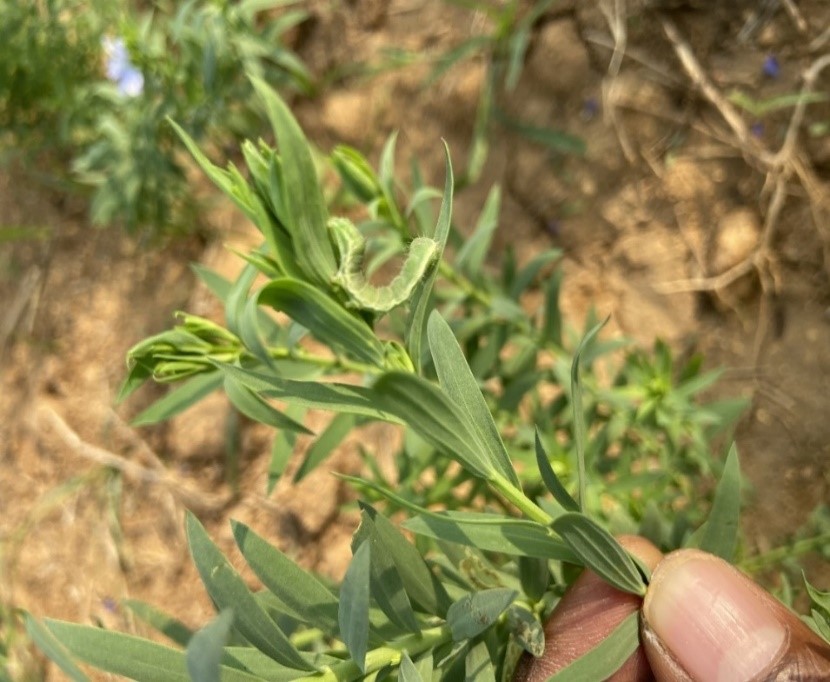
Helicoverpa
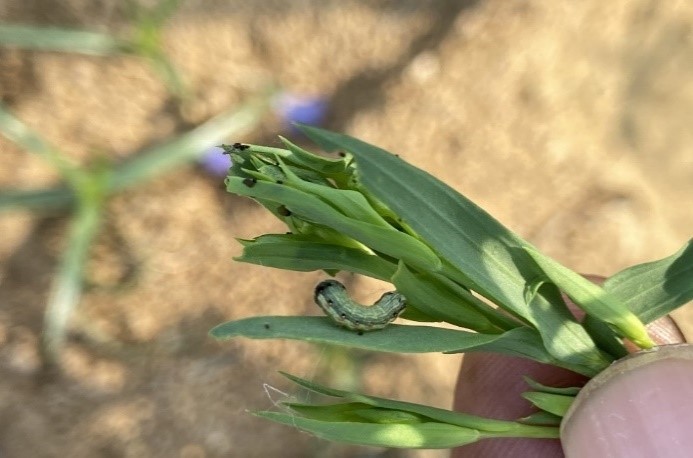
Spodoptera
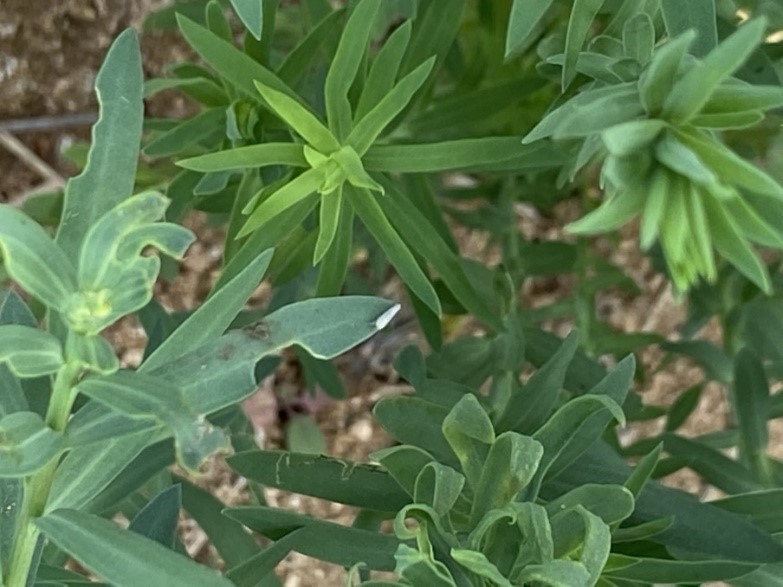
Looper
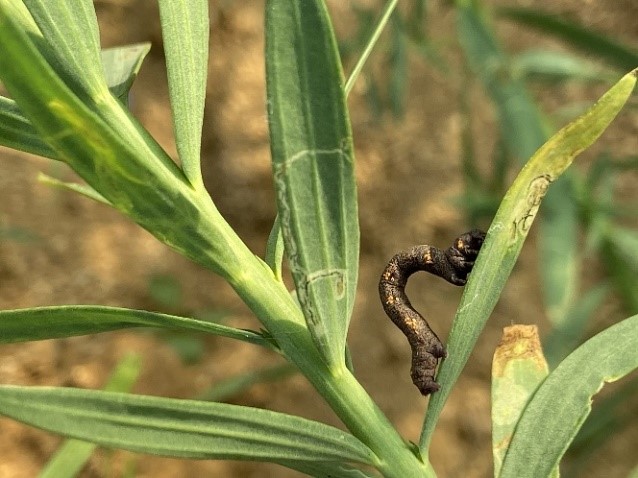
Tussock caterpillar
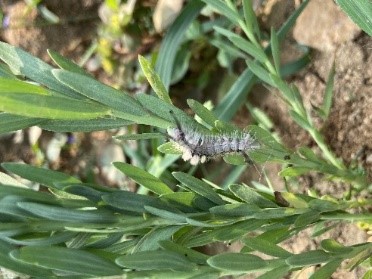
Control measures
- Solarization of soil by ploughing.
- Avoid continuous cultivation of linseed in the same field
- Sowing may be resorted 10-15 days earlier to minimize the bud fly infestation
- Selection of suitable variety with tolerance to the major pests and diseases
- Use of light trap for bud fly; Use of attractant (1 kg Gur-Rabi in 75 lit. of water) for bud fly; Use of bamboo/wooden pegs as dead perches for predatory birds;
- Seed should be treated with Bavistin @ 1.5 g/kg seed or Thiram @ 3 g/kg seed orTopsin-M @ 2.5 g/kg seed to protect the crop from seed-borne diseases and to some extent from soil borne diseases also.
- Two application of neem based commercial formulation containing Azadirachtin 300 ppm reduces upto 63% bud infestation and thereby enhancement upto 40% in seed yield.
- Two fortnightly sprays of spinosad 45 SC (0.015%) reduces upto 78% bud fly infestation, which enhances upto 63% seed yield.
References
- Nair, B., Zanwar, A., Mehta, N., Payasi, D., Mogali, S., Rathnakumar, A.L., Boopathi, T. and Sujatha, M. 2021. Value Added Products of Linseed. All India Coordinated Research Project on Linseed, ICAR-Indian Institute of Oilseeds Research, Rajendranagar, Hyderabad, Telangana, India. 39 p.
- Sahoo, S.K. 2016. Effect of climatic variability on population dynamics of insect pests and natural enemies in linseed (Linum usitatissimum L.). International Journal of Bio-resource & Stress Management, 7(2): 247-251.
- FAO. 2020. Agriculture Production Database. Food and Agricultural Organization. https://www.fao.org/faostat/en/#data/QCL, accessed on May 10, 2022.
- Malik, Y.P. 2006. Yield losses due to bud fly, Dasynerura lini Barnes in linseed. Journal of Oilseeds Research, 23(2): 363.
Contributors : T. Boopathi*, A.L. Rathnakumar and M. Sujatha, ICAR-Indian Institute of Oilseeds Research, Rajendranagar, Hyderabad-500 030, Telangana, India
*Corresponding author email: boopathiars@gmail.com
Related resources
Last Modified : 7/8/2023
This topic provides information about Apricot pes...
This topic covers information about Ber Pests.
This topic covers information about Betelivine Pes...
This topics covers information about Amla pests.
